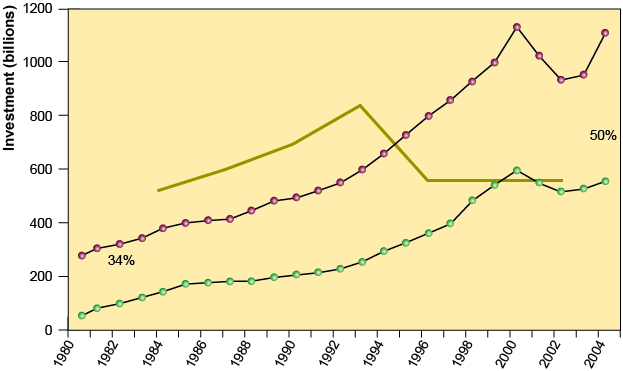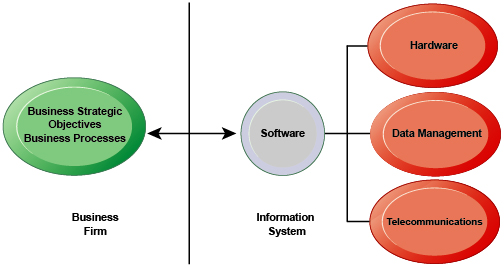| Section 1.1: Bullet Text Study Guide |
The Role of Information Systems in Business Today
Information technology and systems have revolutionized firms and industries, becoming the largest component of capital investment in the U.S. and many industrialized societies. Investment in information technology accounts for approximately 50 percent of all capital invested in the United States.
Figure 1-1
 |
|
Information systems are transforming business and the visible results of this include the increased use of cell phones and wireless telecommunications devices, a massive shift toward online news and information, booming e-commerce and Internet advertising, and new federal security and accounting laws that address issues raised by the exponential growth of digital information. The Internet has also drastically reduced the costs of businesses operating on a global scale.
These changes have led to the emergence of the digital firm, a firm in which:
- Most of the firm's significant business relationships with customers, suppliers, and employees are digitally enabled and mediated.
- Core business processes, or logically related business tasks, are accomplished through digital networks.
- Key corporate assets (intellectual property, core competencies, and financial and human assets) are managed through digital means
- Business responses to changes in their environment are enhanced through digital communications, allowing for time shifting (business being conducted 24x7) and space shifting (business being conducted globally or beyond traditional geographic boundaries).
Information systems are essential for conducting day-to-day business in the U.S. and most other advanced countries, as well as achieving strategic business objectives. Some firms, such as Amazon and E*Trade, would be nonexistent without information systems. Some service industries, such as finance, insurance, and real estate industries, could not operate without information systems. The ability of a firm to use IT is becoming intertwined with the firm's ability to implement corporate strategy.
Figure 1-2
 |
|
- Operational excellence: Efficiency, productivity, and improved changes in business practices and management behavior
- New products, services, and business models: A business model describes how a company produces, delivers, and sells a product or service to create wealth. Information systems and technologies create opportunities for products, services, and new ways to engage in business.
- Customer and supplier intimacy: Improved communication with and service to customers raises revenues, and improved communication with suppliers lowers costs.
- Improved decision making: Without accurate and timely information, business managers must make decisions based on forecasts, best guesses, and luck, a process that results in over and under-production of goods, raising costs, and the loss of customers.
- Competitive advantage: Implementing effective and efficient information systems can allow a company to charge less for superior products, adding up to higher sales and profits than their competitors.
- Survival: Information systems can also be a necessity of doing business. A necessity may be driven by industry-level changes, as in the implementation of ATMs in the retail banking industry. A necessity may also be driven by governmental regulations, such as federal or state statutes requiring a business to retain data and report specific information.